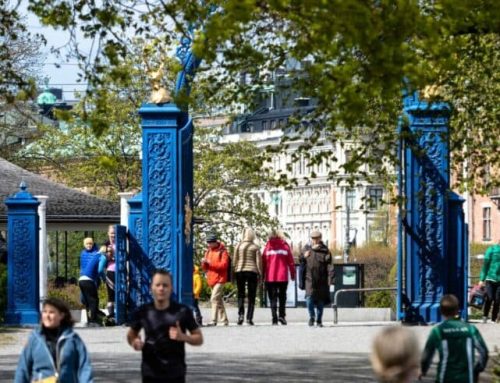Destination Stewardship Report – Summer 2021 (Volume 2, Issue 1)
This post is from the Destination Stewardship Report (Summer 2021, Volume 2, Issue 1), an e-quarterly publication that provides practical information and insights useful to anyone whose work or interests involve improving destination stewardship in a post-pandemic world.
Overtourism’s Lessons for Tomorrow
“In 2019, over 1.5 billion tourists crossed international borders and tourism’s continued growth seemed assured. However, in 2020, tourism stopped in its tracks. The world went from overtourism to no tourism.” – Kelsey Frenkiel, Program Manager at the Center for Responsible Travel (CREST) and co-editor of Overtourism: Lessons for a Better Future (Island Press).

Overtourism to No Tourism: How (and Why) to Build a More Sustainable Tourism Industry
Four panelists were asked five questions about the current state of the travel industry. Participants included:
- Martha Honey, Co-Founder and Director Emeritus of the Center for Responsible Travel (CREST) and co-editor of the book.
- Jonathan Tourtellot, CEO of the Destination Stewardship Center & former National Geographic Travel Editor.
- Arnie Weissmann, Editor in Chief at Travel Weekly.
- Cathy Ritter, Trustee at The Travel Foundation & Former Director or Colorado Tourism Office.
The questions
- “Why has overtourism become a problem, not just for local residents but also for the quality of visitor experience?”
Tourtellot said that it’s not just a matter of overcrowding a destination that is the problem, overtourism also destroys natural areas, spoils ancient historical sites, and more. Ritter noted that contrary to popular belief, it does not take that many people to impact a natural area. Both agreed that these are reasons why overtourism must be addressed. Weissmann observed that international travel is accessible to people now more than ever, due to reasons such as rising middle class, low-cost carriers, and social media. - “What do you see as some of the top factors contributing to overtourism?”
Ritter explained that there needs to be a shift in perspectives by industry professionals, which will not be easy. Tourtellot stated that long-term factors include the increase in the world’s population, growing affluence, and various technological advances. Weissman mentioned short-term factors, such as destinations that are having their “moment” in popular media, resulting in overtourism. For example, the Singapore Tourism Board launched a campaign with Warner Brothers to coincide with the release of the movie, Crazy Rich Asians, which led visitors to flock to the country. - “Describe the impact of the COVID-19 pandemic on tourism in a specific type of destination.”
Ritter began by using the example of public land visitation in Colorado during the pandemic. It increased by 30% in 2020, as it was clear that people had been seeking release during the pandemic and had turned to public lands for it. Weissmann used the example of Miami Beach, and the herds of tourists that it saw during spring break of March 2021, characterized by epidemiologists as a COVID superspreading event. He added that local government is at least using this as a learning opportunity to market Miami Beach as “not just a party destination”. Tourtellot noted that Mallorca in Spain also used the tourism hiatus during the pandemic to repackage itself as “more than a beach destination”. - Describe specific countries that have proposed practical and innovative mitigation strategies to address tourism and the challenges brought on by the COVID-19 pandemic.
Tourtellot said that the countries around the world that have the most innovative strategies seem to be the ones who were suffering overtourism before the pandemic. Ritter stated that Rocky National Park is a prime example of a place that has implemented an innovative mitigation strategy, having introduced a time entry system that allows people to visit the park only at an assigned time. Additionally, Weissmann noted that the city of Amsterdam used the pandemic hiatus to reinvent their tourism strategy with such initiatives as relocating sex workers to designated prostitution hotels and banning marijuana bars. Their aim is to attract a different kind of tourist to the city. - “What are some of the emerging tourism trends coming out of the pandemic?”
Weissmann stated that technology will continue to advance, citing Buenos Aires as an example of a city using innovative technology to manage overtourism. The city collects visitors’ cell phone numbers and manages congested areas by sending out a text with an incentive that directs tourists to less crowded areas of the city. Ritter explained that countries around the world are beginning to realize that they can no longer rely on the strategies of the past to overcome overtourism. Destinations must find ways to attract tourists who are compatible with destination residents. Tourtellot concluded this section of the webinar by observing that we are going to continue to hear about tighter management of cruise tourism. Cities around the world such as Dubrovnik are limiting the number of cruise ships that can enter their ports. Norway is planning to ban cruise ships from entering fjords if they fail emissions standards, in effect banning all but smaller expedition ships.
Q&A The final 20 minutes of the webinar were allotted to a question-and-answer period for attendees to ask questions such as these:
- “What is the influence of social media in getting people to go to desired destination and snap that typical-tourist photo while they are there?” Weissmann noted that this, combined with bucket-list travel, has been a significant feeder of concentrating tourism in particular destinations, adding that the rise in tourism from Instagram is mind-boggling. It drives incredible numbers of tourists to a place. Ritter said that Amsterdam recently decided to remove the “I AMsterdam” sign as it drove overtourism. She’s a fan of the photographer’s code of conduct not to tag a location when posting a photo to social media. Tourtellot advised against simply taking photos of yourself when visiting destinations. Instead, he said, turn the camera around and photograph of the place you are visiting. “After all, you’ve paid to get there.”
- “What are some examples of barriers that countries face when dealing with overtourism?” Ritter stated that some destination leaders find themselves in conflict with their own boards; oftentimes the boards are made up of tourism industry people such as hotel owners who have a vested interest in increasing numbers of visitors. Another barrier is lack of information, Ritter noted, since that is an incredible tool for learning exactly who is visiting, their demography, their reason for visiting. Many destinations lack access to this type of information.
- “Isn’t it better to let certain places experience overtourism and not let overtourism spread to more rural areas that are not prepared for it?” Tourtellot stated that due to the worldwide use of Instagram and social media, pretty much every place is now known. “It’s our job to educate people on how to handle that.” He used the example of Serbia, where tourists in 2020 began going to rural areas and did not know how to behave when they got there. He mentions the importance of education on how to act when arriving in less-visited places in the world. Tourtellot noted that destination marketing is usually funded by hoteliers and others who count on high tourism numbers, thereby creating a cycle of encouraging overtourism. Rural areas need to rethink this, he said, and there needs to be coordination and collaboration across sectors.
Overall, the webinar was a great success, and attendees left with useful information about the current and future state of the tourism industry and its interaction with destinations.
Readers of the Destination Stewardship Report can purchase the book Overtourism: Lessons for a Better Future from Island Press using the code HONEY for a 20% discount.
About DSR Contributors
Volunteer contributors are welcome to the Destination Stewardship Report. Contact us with your proposals and ideas.




